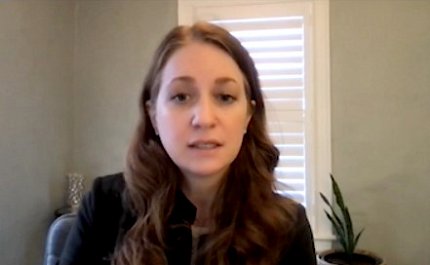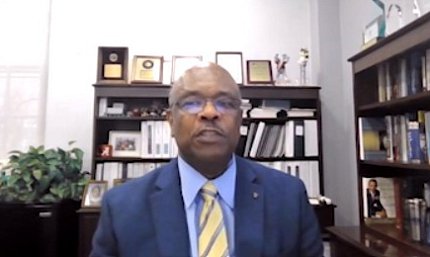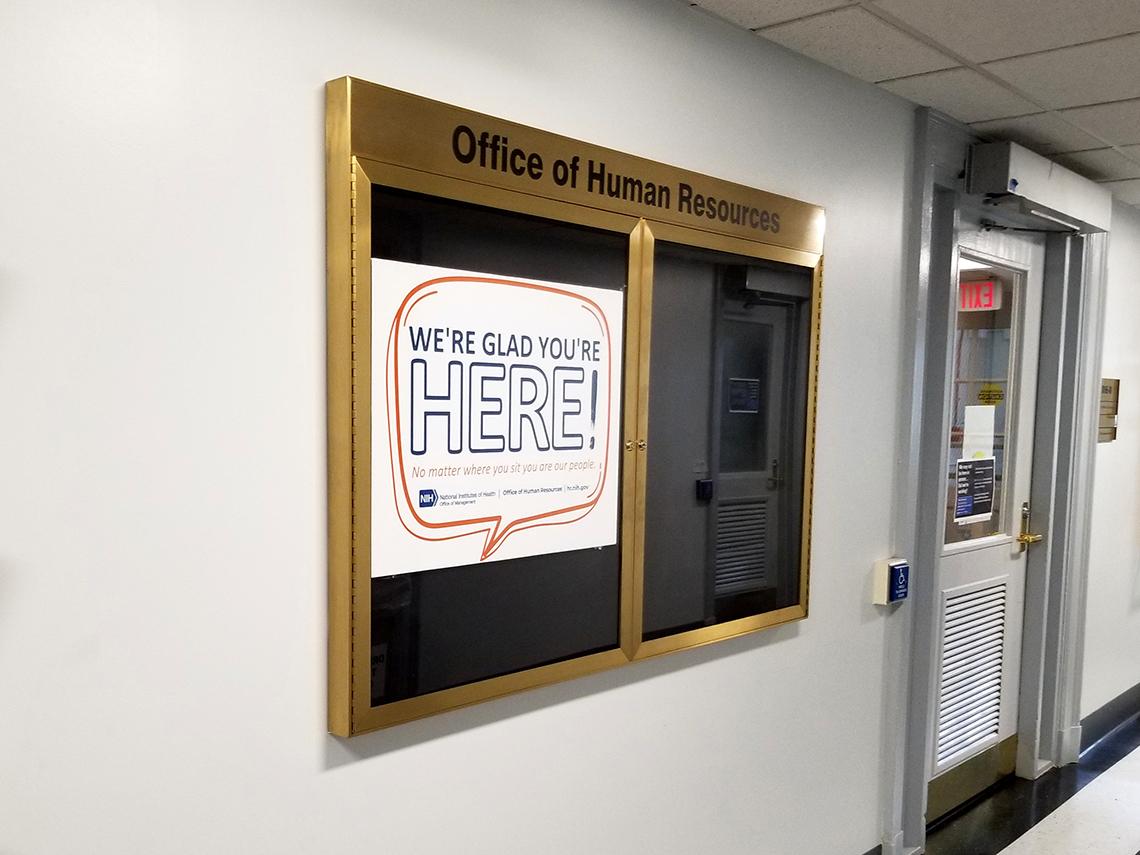Appreciating a Sunset
Latest Town Hall Addresses Return Concerns

Apr. 10 marked the sunset of maximum telework at NIH, with the final group of employees returning to their physical workspaces. In preparation, NIH acting director Dr. Lawrence Tabak hosted the 10th virtual town hall on coronavirus on Apr. 5 to bring workers up to speed on the state of the pandemic in the community and changes they could expect regarding the job site.
Close to 270 questions came into the town hall email box before the meeting. More than 10,500 viewers watched the town hall live.
“Besides expressing my appreciation to all who are returning to the physical workplace, I want to thank the significant number of NIH staff who have been coming into the workplace day in and day out since the start of the pandemic,” said Tabak. “We are very grateful for your dedication and your commitment.”
The hour-long meeting, which was coordinated by the Office of Communications and Public Liaison, gave NIH leaders a chance to discuss the state of the pandemic with the latest Covid-19 statistics for the nation, community and staff and how such data affect agency efforts to get employees back on site to work. Updates on workplace flexibilities as well as safety guidance on meetings and travel were also provided, in addition to responses to more than 20 of the most frequently asked questions received prior to the town hall.

“As of Apr. 4, reports of new coronavirus cases were still falling in most states,” Tabak noted. “But the pace of that improvement is slowing. Hospitalizations also continued to decline across the nation, falling about 28 percent in the past 2 weeks. Fewer than 700 deaths are being reported daily—the lowest average since last August. Still, since the pandemic first emerged 2 years ago, Covid-19 has claimed the lives of more than 980,000 people in the United States. This is a tragic—and in far too many cases—a needlessly high total. The Covid-19 pandemic is not over…There are still reasons for caution and concern.”
In recent months, a subvariant of Omicron has emerged worldwide as the dominant strain responsible for most new Covid-19 infections. Public health experts around the globe are carefully monitoring “Omicron BA.2” and its high transmissibility but so-far low severity (in terms of leading to hospitalizations).
“As we move forward with our plans to return to the physical workplace,” Tabak continued, “we recognize that some NIH staff may have concerns about returning while mitigations are relaxed—particularly those with higher risk profiles or those who live with someone at higher risk…We’ll hear more [during this session] about safety guidance and workplace flexibilities that are intended to help address such concerns.”
NIH acting principal deputy director Dr. Tara Schwetz gave an agency-specific pandemic picture.
“Trends at NIH have largely mirrored those that we are seeing nationally,” she said. “I can share some really encouraging news that Covid-19 cases at NIH have also been trending in the right direction, which is downwards.”
She noted the sharp peak of Omicron in late December 2021 and January 2022, before the decline started in recent months. “Since then, our cumulative caseload has remained steady, with a total of 4,295 index cases since the beginning of the pandemic.”

NIH deputy director for management Dr. Alfred Johnson shared updated guidance for keeping the workplace safe.
“We now have new processes in place that are based on CDC data,” he explained. The main metrics are the case rates, Covid-19 hospital admissions and Covid-occupied inpatient beds.
CDC updates levels for each county nationwide on Thursday evening or early Friday morning of each week. NIH-specific community numbers are culled from that data and used to inform policies on safety measures—including requirements for vaccination and testing, mask wearing and social distancing—for all of its work sites.
Added to their concerns about the pandemic, returning staff also wanted to know about basic logistics—new construction projects and parking and traffic in and around NIH’s main campus. Johnson pointed to a burgeoning Building for All information campaign that will address such issues and offer real-time updates. For now, look for navigation tips online at: https://traffic.nih.gov/.

Julie Berko, director of NIH’s Office of Human Resources, talked about staff returning to work in person, what has changed, what has stayed the same and the evolution of a hybrid work model.
“It’s been so great to see employees returning onto the Bethesda campus over the last week,” she said, announcing the launch of the new NIH Workplace Flexibilities Program, which is based on an HHS policy that was finalized Mar. 22.
“This new program begins our journey to be a model of the future workforce,” Berko said. “It’s important to note that NIH has long served as a model on the forefront of flexibilities using telework, remote work and alternative work schedules like maxi-flex for many years. One significant addition of [the new] policy is an expanded definition of remote work, which now includes having an alternative duty station that is either within or outside of the local commuting area of the agency worksite.”
To explore details of the new program and consider what works for you, check out https://go.usa.gov/xubkC.
Tabak closed the session by reflecting on a message HHS Secretary Xavier Becerra wrote to all staff in a recent email: “We will not be returning to a pre-Covid-19 workplace. The world has changed, and we must change with it.”
“I couldn’t agree more,” Tabak concluded. “As those of us at NIH go through that journey of change together, we will almost certainly encounter unforeseen challenges along with unexpected opportunities. Yet throughout it all, please let us all practice kindness and respect for one another. That has always been the NIH way.”
NIH’ers can watch the town hall in its entirety at: https://videocast.nih.gov/watch=45064. Also, refer to an ever-growing collection of resources on all things pandemic related, including tips for coping physically, mentally and emotionally, at: https://go.usa.gov/xubkx.

